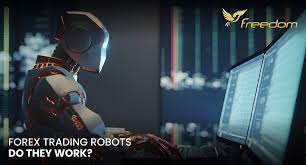In the fast-paced realm of foreign exchange (forex) trading, staying ahead of the curve often means embracing innovative technologies. Among these innovations, forex robots have emerged as powerful tools, promising to revolutionize trading strategies and decision-making processes. These automated systems, also known as expert forex robot (EAs), have garnered significant attention from traders worldwide. But what exactly are forex robots, and how do they function in the complex landscape of currency trading?
Understanding Forex Robots
Forex robots are software programs designed to execute trades on behalf of traders in the forex market. Leveraging advanced algorithms and predefined criteria, these robots analyze market data, identify trading opportunities, and execute trades automatically without the need for human intervention. Essentially, they aim to capitalize on market inefficiencies and fluctuations swiftly and efficiently.
The primary allure of forex robots lies in their ability to eliminate emotional biases from trading decisions. Human traders often fall victim to emotions such as fear and greed, leading to irrational decision-making and poor outcomes. In contrast, robots operate based on predefined rules and logic, devoid of emotional influence. This disciplined approach can potentially mitigate risks and improve consistency in trading performance.
How Forex Robots Work
Forex robots rely on a combination of technical indicators, price action analysis, and other parameters to make trading decisions. These parameters can be customized by traders to align with their specific trading preferences and risk tolerance levels. Some robots operate based on simple strategies, while others employ complex algorithms and machine learning techniques to adapt to changing market conditions.
Upon identifying a trading signal that meets the predefined criteria, the robot executes the corresponding buy or sell order automatically through the trader’s brokerage account. This process occurs in a matter of milliseconds, allowing forex robots to capitalize on fleeting market opportunities that may elude human traders.
Furthermore, forex robots can operate around the clock, taking advantage of global market sessions across different time zones. This 24/5 availability ensures that trading opportunities are not missed, regardless of the trader’s location or time zone.
Benefits and Challenges
The adoption of forex robots offers several potential benefits to traders:
- Automation and Efficiency: Forex robots streamline the trading process, allowing traders to execute trades automatically without constant monitoring. This frees up time and reduces the burden of manual trading tasks.
- Emotion-Free Trading: By eliminating emotional biases, forex robots help maintain discipline and consistency in trading decisions, potentially leading to improved performance over the long term.
- Speed and Accuracy: Robots can analyze vast amounts of market data and execute trades with precision at lightning-fast speeds, minimizing delays and slippage.
However, it’s essential to recognize that forex robots also pose certain challenges and risks:
- Over-Optimization: Excessive customization and optimization of robot parameters may lead to curve-fitting, where the robot performs well in historical data but fails to adapt to real-time market conditions effectively.
- Technical Issues: Like any software, forex robots are susceptible to technical glitches, bugs, or connectivity issues, which can disrupt trading operations and result in unexpected losses.
- Market Volatility: While robots are designed to thrive in volatile market conditions, extreme fluctuations or unforeseen events can pose challenges and trigger unexpected outcomes.
Conclusion
Forex robots represent a compelling tool for traders seeking to automate their trading strategies and capitalize on market opportunities efficiently. By leveraging advanced algorithms and automation technology, these systems offer the potential to enhance trading performance and consistency while minimizing emotional biases.
However, it’s crucial for traders to approach forex robots with caution and diligence. Thorough testing, risk management strategies, and ongoing monitoring are essential to mitigate risks and optimize the performance of these automated trading systems.
Ultimately, while forex robots can augment trading capabilities and efficiency, they should be viewed as tools to complement human expertise rather than replace it entirely. By striking the right balance between automation and human oversight, traders can harness the power of forex robots to navigate the dynamic landscape of the forex market successfully.
